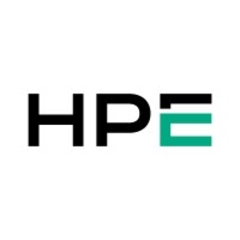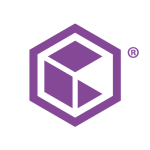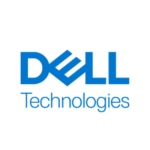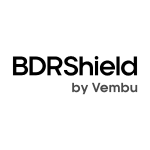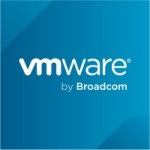What is our primary use case?
We have critical servers at remote sites that failover or are replicated to our main data center in case of an emergency. If a remote site has a failure, we can spin up that virtual machine from our data center.
We operate a hub and spoke design with a centralized data center hosting our main instance, reaching out to roughly 78 remote locations. We handle the VPGs through the centralized management console at our data center.
We also use the Zerto to replicate from a primary host to a secondary host in case the primary goes down; we have a kind of cold box to which the solution replicates.
Our final use case is if we are updating a plant's entire server rack, and we use Zerto to replicate the old servers onto the new ones, which results in less downtime.
How has it helped my organization?
The product significantly decreased the time it takes to deploy new servers; we can work on them, build them, and then failover the old VMs to the new server with minimal business impact. What previously took hours to migrate the VMs with vMotion typically takes 30 minutes with Zerto, which is a phenomenal time saving for us. Our plants also have the reassurance that when we replicate their main servers back to a data center, we can keep their business running even if they have a total loss of a server rack or power.
The solution has helped to reduce downtime; we had a situation where a plant had its server fail, and we could failover their server to our data center and had them back up and running within 30 minutes. The required parts for a fix took three days to arrive, but thanks to Zerto, they did not have three days of downtime. Additionally, we just updated our hardware at our plants from HP servers to Dell, and we had to move 10 to 15 VMs per location from the old servers to the new ones. We completed this relatively significant move- roughly eight TB worth of data- in 30 to 45 minutes versus multiple hours, a remarkable reduction of potential downtime. Depending on the plant, downtime can cost $100/minute and potentially much higher if they are into online sales.
The product helped to reduce our organization's DR testing; we previously used a Hitachi failover or manual VM move, but now we have Zerto VPGs at all sites. We can click the failover button, and it's done about 30 minutes later. It's good not to have to failover manually. Regarding time saved, we can get testing for a plant done in 30-45 minutes, resulting in between two and six hours' worth of savings.
What is most valuable?
The solution's most valuable aspect is allowing a failover from our remote sites to our data center. Our remote sites have failed several times, and on each occasion, we were able to bring a plant back online within 30 minutes, even though the hardware repair took many days.
The solution is very straightforward, especially after using it a few times. We had users who were daunted by it, but once we walked them through how easy it is to failover, they felt pretty comfortable. Zerto is easy to use and doesn't take long to learn, which is nice.
We like the near-synchronous replication feature, and it's essential as we want to reduce the amount of data lost during a failover. The RPO and RTO are excellent, thanks to Zerto, and we have some sites with poor bandwidth, so we understand the limitations we're working with. Near-synchronous replication allows us to roll back to a specific hour or minute in case of a failure, which is a great feature.
One of our primary uses for the solution is to protect VMs in our environment, which has an excellent effect on our RPOs. We had a data breach several years ago, and Zerto helped us quickly get back up. We like it a lot because we can failover within minutes once we detect an issue.
What needs improvement?
I want to have an OVF or some local deployment where I can deploy the ZVRA rather than having to push it from the console. Some of our smaller remote sites have relatively poor bandwidth, and they can't keep up with the constant deployment stream from our center console, meaning we have to find some creative hours to get around the bandwidth bottlenecks. If I could push out a small install file, install it locally, and then reach back to the console, that would be excellent.
Buyer's Guide
HPE Zerto Software
December 2025
Learn what your peers think about HPE Zerto Software. Get advice and tips from experienced pros sharing their opinions. Updated: December 2025.
879,259 professionals have used our research since 2012.
For how long have I used the solution?
We've been using the solution for over five years.
What do I think about the stability of the solution?
Zerto is very stable; we only have problems with sites with poor bandwidth, and there's little we can do to get around that. Sometimes VPGs get outdated because those sites can't copy the data fast enough, but the application is very stable.
What do I think about the scalability of the solution?
The solution scales exceptionally well; we add more licenses when required and keep running. We currently have over 400 licenses.
How are customer service and support?
I recently contacted technical support, and I rate them seven out of ten.
How would you rate customer service and support?
Which solution did I use previously and why did I switch?
We previously used Veeam, Commvault, and a Hitachi solution. We switched because Zerto has a better RTO and RP, and it's much easier to use than Veeam. The Hitachi solution was very cumbersome as it was CLI only, and we had to unmount and remount storage.
Comparing the ease of use with other solutions, Zerto is excellent; once we have the VPG, there's a large failover button which allows our entire team to carry out the function. It's elementary. After showing a team member once or twice, they can operate the tool independently. The graphics and GUI show us the failover progression, so we don't have to wonder if it has taken place or how long is left. The tool keeps good stats and informs us of the step it's on.
How was the initial setup?
I wasn't involved in the initial deployment, but we operate the solution with one team, our server team. Regarding maintenance, a minimal amount is required to keep up to date with patches etc. We occasionally run into an issue that necessitates upgrading to a newer version; for example, we were trying to move some vast data stores, and Zerto support said we needed to increase the timeout count. We keep fully up to date with security patches, and two staff members are responsible for maintenance.
What was our ROI?
We have seen an ROI with Zerto, though it's hard to quantify precisely how much. It saved us a significant amount of downtime, and plants lose money when they're down, so it's a hidden ROI in that respect.
What's my experience with pricing, setup cost, and licensing?
As far as I know, the pricing is around $1,000 per VM, but Zerto is changing the pricing model to more of an enterprise-class license. I don't know if there are any additional costs or fees.
What other advice do I have?
I rate the solution nine out of ten.
Zerto did not reduce the number of staff involved in data recovery, overall backup, and DR management because we already run a very lean staff; there are eight of us on the server team, and we manage over 3000 servers across the company. On the other hand, Zerto enables multiple staff to do the failovers rather than one of two specialized employees.
None of the time saved in DR testing has been allocated to value-add tasks because the time saved occurs outside our regular business hours.
Comparing the solution's speed of recovery with other disaster recovery tools, Zerto is excellent and rapid; we can restore everything in the VPG simultaneously. A tool like Commvault is single-threaded, so we would have to restore VM by VM, which is very limiting. VPGs are excellent because we can restore everything within them and get on with life.
We have not used the tool for immutable data copies; we use our pure storage.
When we had a ransomware attack, the solution didn't initially save us time as they attacked our Zerto environment and took it down. Once we had it back online, we could speed up the recovery, and we've since hardened the product with additional security.
Which deployment model are you using for this solution?
On-premises
Disclosure: PeerSpot contacted the reviewer to collect the review and to validate authenticity. The reviewer was referred by the vendor, but the review is not subject to editing or approval by the vendor.

